A Comprehensive Review: Bullying's Impact on Youth Mental Health
VerifiedAdded on 2022/09/12
|5
|1035
|25
Literature Review
AI Summary
This literature review examines the pervasive and detrimental effects of bullying on the mental health of young people. It synthesizes findings from four key academic articles: Li & Shi (2018) which investigates the relationship between bullying and suicide in high school students, Bjereld et al. (2015) which explores mental health problems and social resource factors among bullied children in Nordic countries, Bayer et al. (2018) which studies bullying, mental health, and friendship in Australian primary school children, and Baldry (2004) which analyzes the impact of direct and indirect bullying on the mental and physical health of Italian youngsters. The review provides a detailed summary of each article, highlighting methodologies, findings, and limitations. Critiques focus on methodological rigor, sample sizes, and the establishment of causal relationships. The review also examines the relevance of the findings to the broader topic of youth mental health, emphasizing the psychological impact of bullying, including increased risks of depression, anxiety, and suicidal ideation. The studies collectively underscore the need for comprehensive interventions to prevent and address bullying, and to support the mental well-being of young people.
1 out of 5
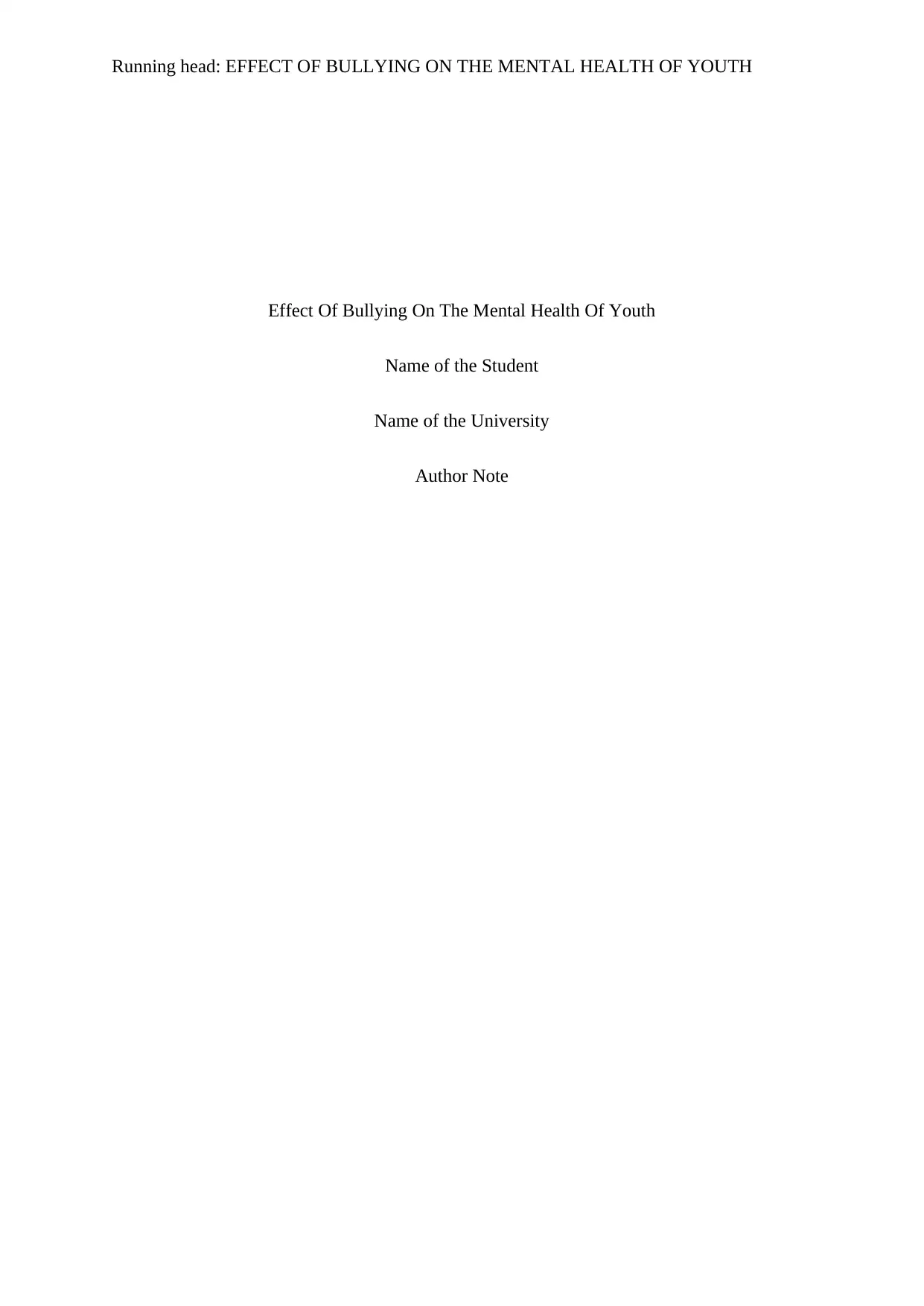
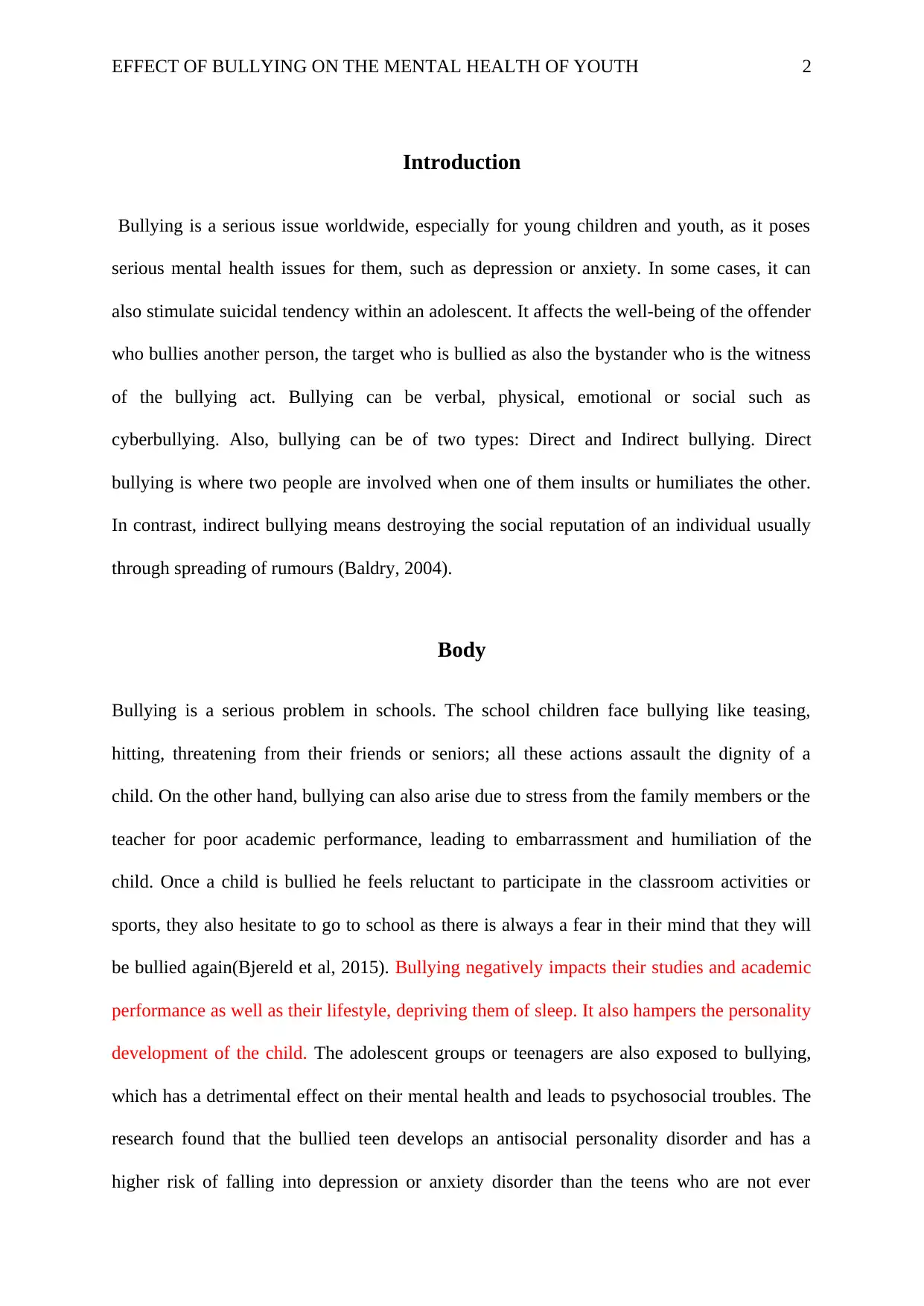
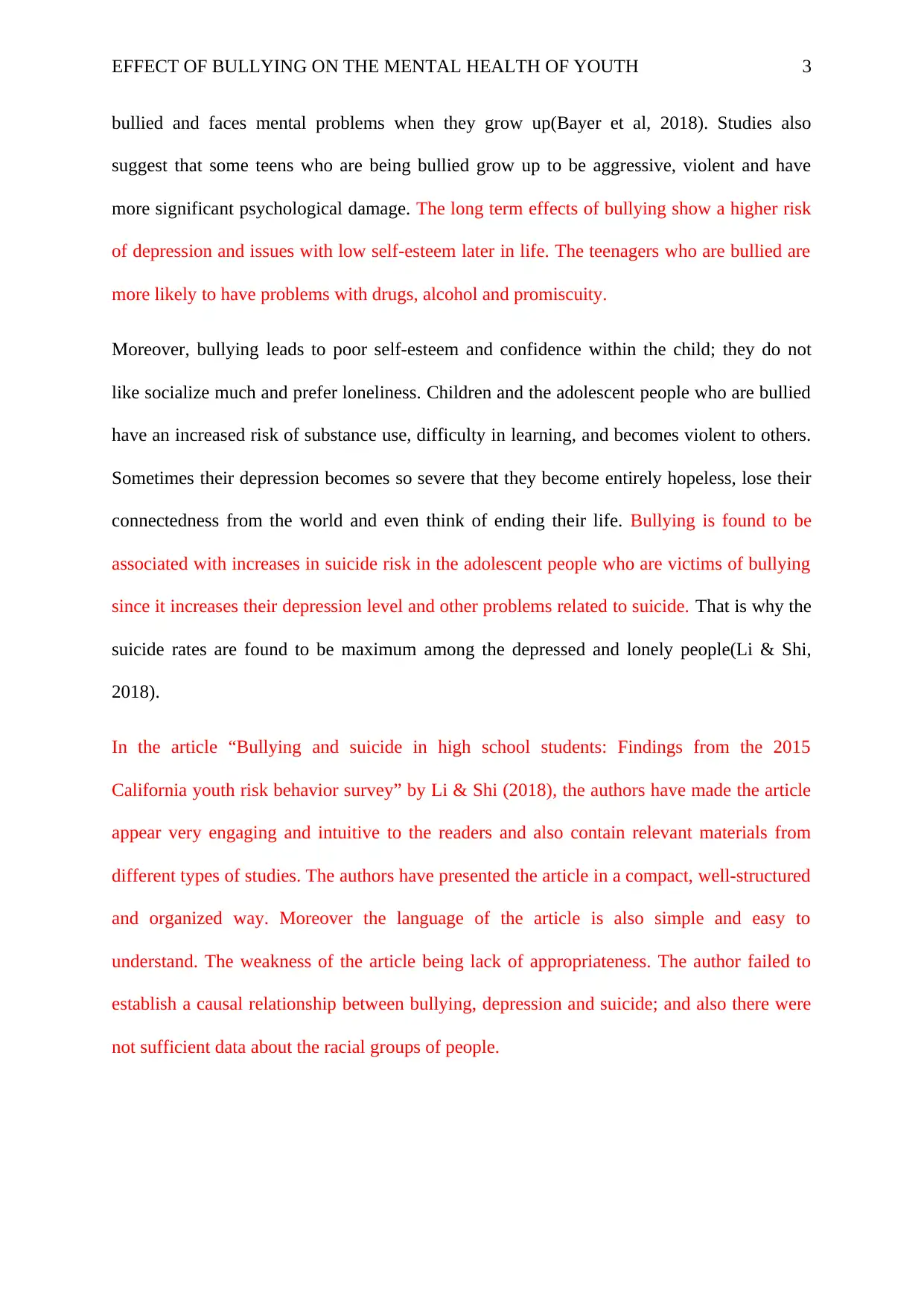

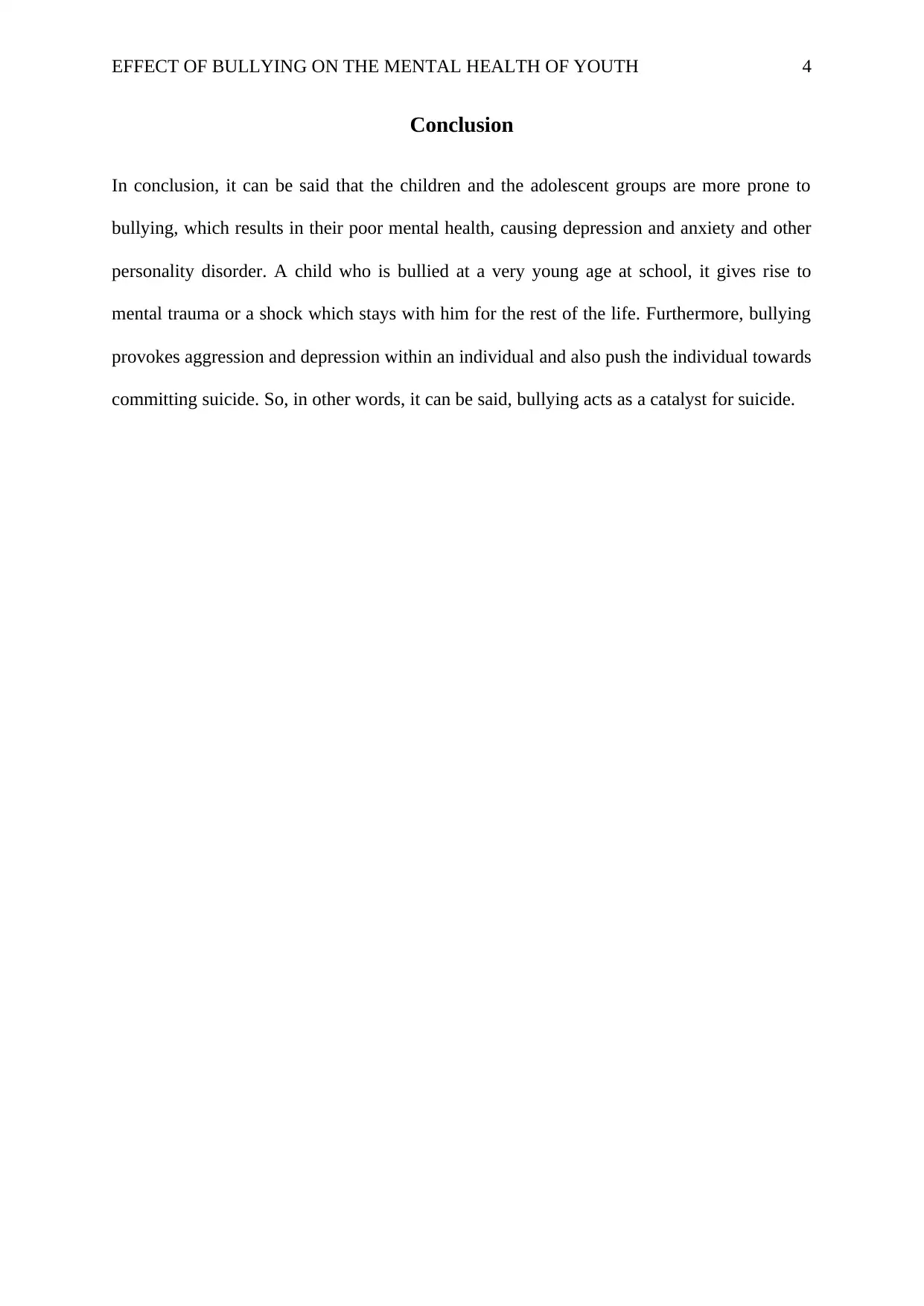
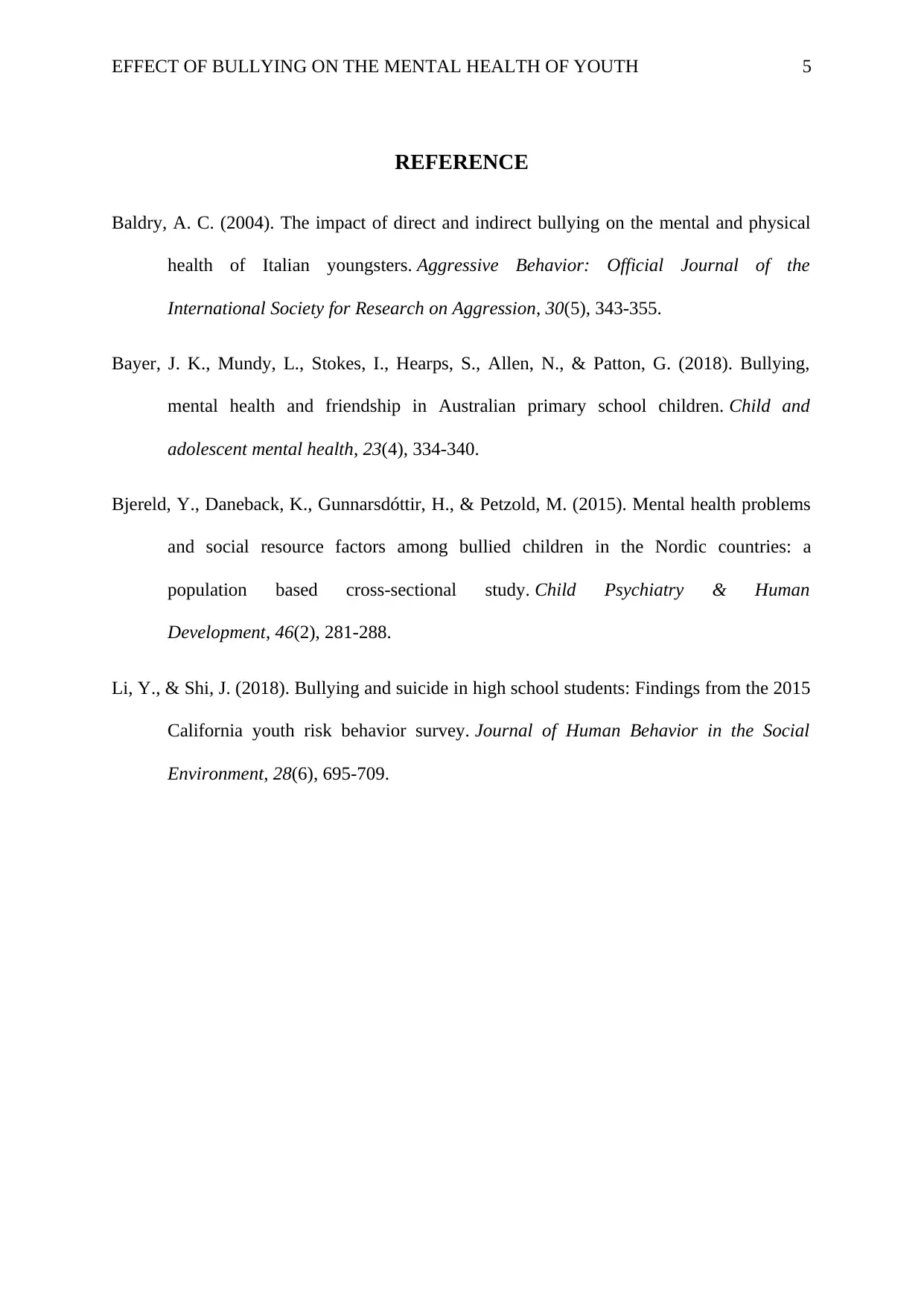





![[object Object]](/_next/static/media/star-bottom.7253800d.svg)